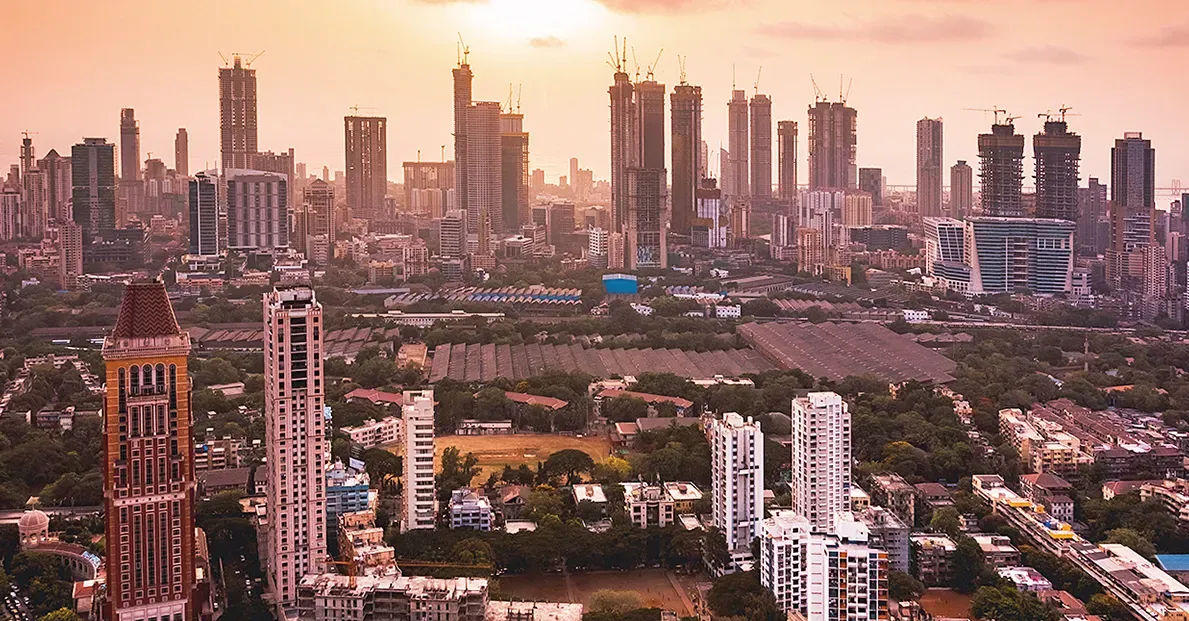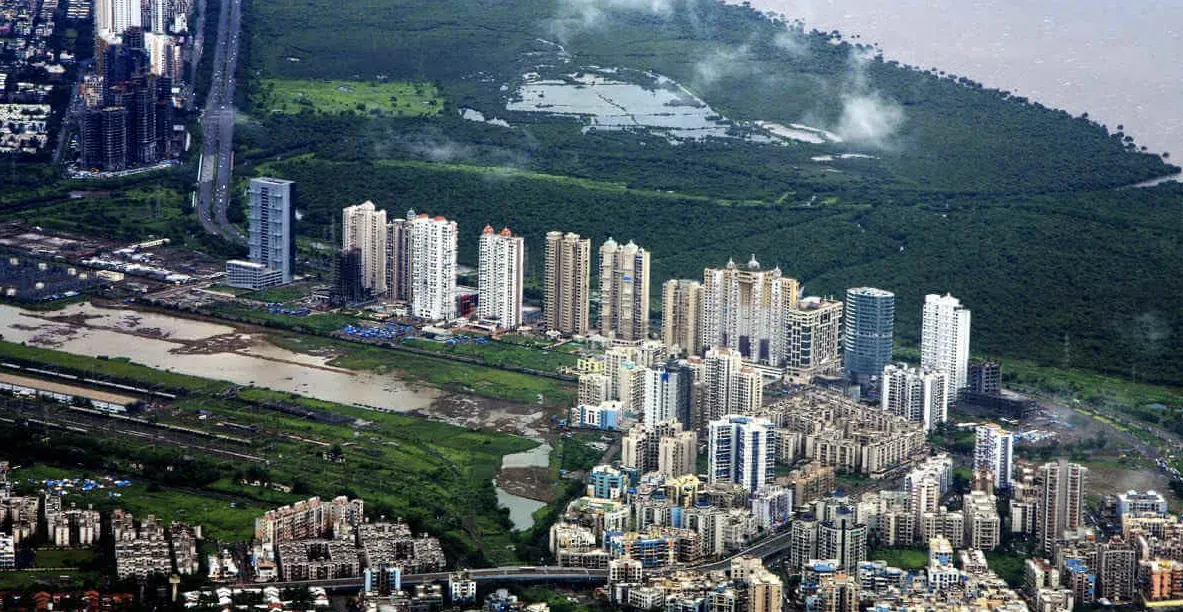Future of Housing in Mumbai: Why Compact Apartments Are Rising

By
Shrusti Naik
Posted on November 20, 2025. 10 mins

Introduction

In the city that never sleeps, Mumbai’s housing narrative is shifting. While luxury homes still headline the media, the real story lies with compact apartments, smaller homes gaining outsized share in the market. In 2025, several structural factors converge: land scarcity, rising costs, evolving buyer profiles and infrastructure expansion. This blog explores why compact apartments are rising even as the luxury segment thrives and what it means for home-buyers and investors alike.
Key Statistics at a Glance
Key Stats:
- Apartments sized 500-1,000 sq ft accounted for about 83% of registrations in Mumbai in 2025. ([PropertyWala][1])
- Apartments below 500 sq ft made up nearly 33% of monthly sales in the city. ([geosquare][2])
- The average price in Mumbai in 2025 reached ~₹26,975 per sq ft. ([SOBHA Limited][3])
- One- and two-bedroom apartments rose to 54% of total demand in Q3 2025. ([The Economic Times][4])
These numbers highlight a clear trend: compact homes are no longer niche, they dominate transaction volumes. Also read, 2BHK in Mumbai: Best Localities for Price & Lifestyle 2025
Why Are Compact Apartments Gaining Traction?
Land Constraints & Rising Price Per Sq Ft
Mumbai’s land is an increasingly scarce commodity. With average prices nearing ₹27,000 per sq ft, the only way to keep a home within reach is to reduce size. Builders and buyers are adapting accordingly. ([SOBHA Limited][3])
Affordability Pressure for Mid-Income Buyers
For salaried professionals and first-time buyers, a sprawling 3 BHK in a prime suburb becomes unaffordable. A well-designed 1 BHK or 2 BHK in a decent suburb suddenly becomes the smarter choice. The sharp rise in one- and two-bedroom demand reflects this. ([The Economic Times][4])
Urban Lifestyle & Smaller Households
Smaller households, nuclear families, single professionals and migrant workers favour compact homes—less maintenance, lower costs, proximity to work hubs. According to a market blog: “Compact homes typically range from 250 sq ft to 600 sq ft in Mumbai’s context.” ([TyTil][5]) Also check out, The Ins and Outs of Property Management for Landlords: Maximizing Your Rental Income
Better Connectivity & Redevelopment Driving Location Premium
As suburbs get better rail/metro connectivity and redevelopment projects unlock older land, smaller homes in improved localities become viable value-plays. The redevelopment pipeline of ~44,000 homes in Mumbai supports this. ([The Economic Times][6])
Compact vs Luxury – A Comparative View
| Feature | Compact Apartments (250-600 sq ft / 500-1,000 sq ft) | Luxury Segment (2,000 sq ft + / ₹10 crore +) |
|---|---|---|
| Buyer profile | Young professionals, first-time buyers, smaller families | HNWIs, investors, legacy homes |
| Price point | Affordable relative to size, better value per sq ft | Ultra-premium pricing, status homes |
| Growth driver | Volume – many units sold, mid-income demand | Niche – fewer units, high ticket size |
| Risk & liquidity | Better resell scope in mid / high volume segment | Thicker margins, but limited buyer pool |
| Maintenance & cost | Lower absolute cost but cost/sq ft may be higher | Higher absolute cost, but amenities, space, prestige add value |
In other words, compact and luxury segments are not opposing—they coexist. The compact segment drives volume and addresses affordability; the luxury segment commands premium and prestige. Also read, What Salary to Afford a 2BHK in Mumbai in 2025
What This Means for Buyers & Investors
For Home Buyers
- If your budget is modest, don’t aim automatically for size—opt for a compact unit in a good location.
- Be practical about living space: a well-designed 2 BHK of 500-600 sq ft in a well-connected suburb may give you more utility than a larger flat far away.
- Expect higher price per sq ft in central zones; reducing size is one way to stay within budget.
For Investors
- Compact units tend to offer better transaction volumes and potentially better liquidity.
- Rental markets favour smaller homes near employment hubs—yields may be moderate (≈2.5-4.5%) but occupancy is strong. ([TyTil][5])
- Luxury homes, while high prestige, may hold longer-term bets and require higher investment horizon.
For Developers & Market Strategists
- Supply of compact homes is rising; developers must focus on smart layouts, modular interiors, cost control.
- Infrastructure upgrades (metro, road connectivity) enhance value for compact apartments in newer suburbs.
- Redevelopment of older societies is adding supply but the major share is still compact units. ([The Economic Times][6])
Also read 3BHK vs 2BHK in Mumbai: Which Appreciates More Long Term?
Where to Focus in Mumbai?
While compact homes dominate, location still rules. According to reports:
- Western and Central suburbs continue to account for ~84% of registrations. ([RP Realty Plus][7])
- Suburbs with good connectivity (Andheri, Borivali, Malad, Thane corridor) are attractive for compact homes. ([SOBHA Limited][8])
- Emerging zones like Navi Mumbai and Thane are offering more affordable compact options with future upside.
Thus, when looking for compact housing in Mumbai, prioritise: accessibility, infrastructure growth, and society/redevelopment credibility.
Conclusion

Mumbai’s housing future is being written in compact spaces. In a city where land is gold and prices sky-high, smaller homes aren’t a compromise, they’re the smart-buy. Whether you’re a buyer seeking value, an investor seeking volume, or a developer aiming at market fit, compact apartments are central to Mumbai’s housing ecosystem. Luxury homes will continue to shine, but the mass-market pulse of Mumbai lies in well-designed compact units in well-connected localities. If you recognise this shift, you’ll align with the future of housing in Mumbai.
Frequently Asked Questions
1. Does “compact apartment” mean sacrificing quality? Not necessarily. As reports show, builders are innovating layouts, smart storage and amenities to make smaller homes functional and efficient. ([TyTil][5])
2. Are luxury homes in Mumbai becoming obsolete? No. The luxury segment still recorded high-value transactions (₹10 crore +) in H1 2025. ([The Economic Times][9]) But volume is lower; the growth engine is in compact homes.
3. Is the compact model only for renters or first-time buyers? While many are first-time buyers, compact homes are increasingly chosen by families wanting proximity to work and amenities rather than expansive space, so they span multiple segments.
4. Will compact apartment values appreciate as well as larger homes? Yes. Because supply and demand favour them and location matters more than size. An efficient 600 sq ft in a good suburb may appreciate quickly.
5. What size qualifies as ‘compact’ in Mumbai today? Typically units between ~250 sq ft (micro) to ~600 sq ft (1-2 BHK) and up to 1,000 sq ft in some layouts. Reports show units up to 1,000 sq ft accounted for ~85% of registrations. ([RP Realty Plus][7])
References
- “Mumbai Apartment Economics: Why Compact 500-1000 sq ft Units Dominate Registrations,” PropertyWala Blog, Oct 12 2025. ([PropertyWala][1])
- “Why Small Apartments Are in High Demand in Mumbai’s Real Estate Market,” GeoSquare, Sep 29 2024. ([geosquare][2])
- “Mumbai Housing Market Trends 2025: Compact Living & Rentals,” Tytil Blog, Sept 15 2025. ([TyTil][5])
- “Mumbai Housing Market Analysis Trends & Opportunities,” SOBHA Blog, Oct 31 2025. ([SOBHA Limited][3])
- “Demand for smaller homes surges in September quarter,” The Economic Times, Oct 6 2025. ([The Economic Times][4])
- “Mumbai redevelopment boom: 44,000 new homes worth Rs 1.3 lakh crore in pipeline,” ETMarkets, Sept 15 2025. ([The Economic Times][6])
- “Mumbai’s Growing Residential Market,” IntegrowAMC Article, June 16 2025. ([Integrow][10])